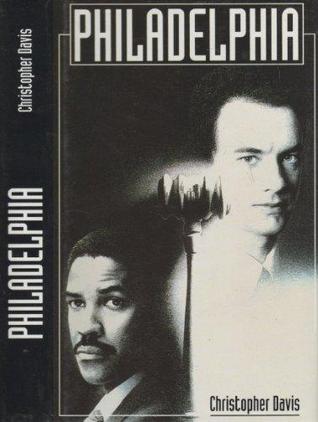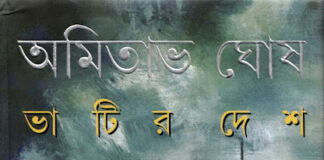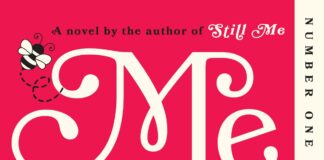Every society has come a long way in order to publicly address the taboos revolving around scilicet homosexuality and ailments like HIV/AIDS. It was not until the late 1980s that even in a country as vast and ideal as the USA; the concepts were not discussed aloud and left alone the awareness. The ideas still are subjected to circumspection in many nations and at times also irate the non- proponents.
Perhaps, the human nature of eluding from serious yet inevitable consequences should be blamed. Or, it could be our coping mechanism of living in this world of make-belief. What makes this situation more concerning is when people that relate to homosexuality or are ailing with HIV/AIDS are discriminated against at their workplaces. This puts the biggest question on not only our morals but also on the impeccable knowledge we never leave a chance to flaunt. The answer for the same is followed by another question of who is ought to take the onus of educating society?
Christopher Davis was born in 1950 in the apparently notorious country, USA. His topics of concern were homosexuality and HIV/AIDS which earns him continuous respect from readers all over the world. Best known for his work ‘Valley of the Shadow(1988)’, Davis obtained various nominations like Lambda Literary Award For Gay Fiction in the subsequent year. The book was highly praised by the substantial number of people that acknowledge the requirement to bring the issues out in society.
Davis has also contributed to a short story collection called ‘The boys in the bars(1989)’ and a novel ‘Joseph and the Old Man(1986)’. However, all the saved honours are meted out to his last work ‘Philadelphia’.
The book ‘Philadelphia’ starts with an introduction of Andrew Beckett who is at the peak of his law career. He is a senior associate at one of the notable law firms in the city. Despite being brilliant, energetic, and flawless at his work, he was bounded to conceal his homosexuality.
Later, a partner noticed a lesion on Andrew’s forehead which he dismisses as a racquetball wound. Apparently, he was manifesting signs of Kaposi’s sarcoma often an obvious symptom of AIDS. The visible lesions made him work from home for few days so that he could come up with ideas to hide the same.
Ambitious Beckett was working on this case during that time and it was an excellent opportunity to prove his skills and earn the position of a partner of his firm. He prepares the paperwork, assigns all the sub-associates their share of work and calls it a day. The next day, he was enquired about the paperwork that could be found nowhere via a call. Cut to, the documents were discovered in a non-designated location which put Andrew in a bad position. Yes, he was fired the next day.
Andrew undoubtedly claimed it to be a conspiracy against him because the word about his sexual orientation and disease had spread the firm like a wildfire. He then decides to sue the firm for their unfair treatment but the case was however dropped by nine out of the ten injury lawyers and the African-American lawyer Joe Miller (once his adversary) marks the tenth.
However, Miller naturally was wary and went to a doctor to check whether he got the disease too after coming in contact with Andrew. This is where he learns about the crucial fact that HIV infection is not spread via casual touches. But too late! He had already declined to take up the case.
Visiting the library and looking for books on similar cases became a routine as Andrew was left with no option but to take up his own case. He gathered some fierce and frightened looks from the people in the library. Even if this is not an apple to apple comparison but, Miller felt sympathetic towards Andrew as he himself once suffered from race-based discrimination. Miller received all the materials that Andrew collected, signifying that he is ready to represent the case.
In the court, was waiting for Beckett unjust allegations like insincerity towards work and purposely keeping the disease latent. The defence alleged that gay sex was Andrew’s route to such diseases. Ms Kenton, that very partner who noticed the lesion first denied testifying it as a potential symptom which strengthened the argument that Andrew did deliberately hide his condition. What a splendid fabrication!
As bold as Miller could be, asked Andrew to unbutton his shirt to set up the argument that the lesions are noticeable enough for Ms Kenton that has experience working with a client that developed the disease via blood transfusion. While working on the case, Miller and many others recovered from homophobia.
Such trials are indeed exhausting and were especially unbearable for Andrew who collapsed whilst attending one. We, humans, realize our mistakes when things start to go downhill and it’s finally time to redeem ourselves. Such a human was Bob Sidemen that suspected Beckett to be having AIDS but never confronted him. He sincerely apologizes to ailing Beckett for being ignorant all this time.
Miller attains triumph by ensuring the jury’s votes in Andrew’s favour. He was compensated with damage pays for the mental sufferings from the firm which amounted to over 5 million dollars. Millar couldn’t contain his happiness and rushed to the hospital to see dying Andrew Beckett, caressing his face with tears of joy.
Miguel Alvarez is Andrew’s significant other. He said to his beloved that he is now “ready”, signalling the inevitable. Joe Millar and his wife received a phone call later that night about the news of Andrew’s passing away.
The story is a perfect conflating of the two most sceptical ideas of that time. While working on such a sensitive case, Joe and Andrew got along gradually and it is interesting to witness how working on a problem that was once viewed as a conundrum, provided answers to many other engendered juxtaposing opinions.
“Explain this to me like I’m a two-year-old”
This catchphrase of Joe Miller remains iconic as the story also consists of bits of his struggles as a new dad and his besetting two years old. The amalgamation of humour, professionalism, melancholy, etc. made the novel so popular that it was made into a motion film in 1993. The movie has the majority numbers of “green highlighted wins” as per Wikipedia.










